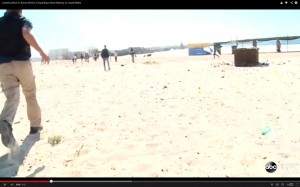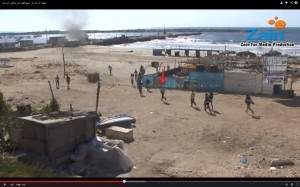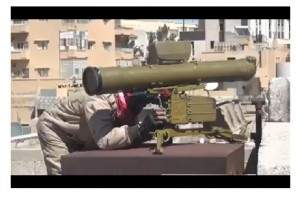Journalist confirms Gaza beach deception operation
April 10, 2024 by Thomas Wictor
I just got off the phone with a journalist whose name you’d recognize. This person will remain anonymous. The journalist confirmed that the killing of Ismail, Mohammed, Ahed, and Zakaria Bakr on the Gaza beach, July 16, 2014, was a Hamas deception operation. This is a person who is very angry at what happened and who called me out of the blue. Another journalist gave the person my telephone number. At the person’s request, I didn’t record the call. Everything written below is reconstructed from memory.
The journalist was not present in Gaza during the war. However, the journalist told me that I had indeed uncovered the incontrovertible proof of the deception, even though I didn’t know it. I didn’t have to check the journalist’s identity, because what the person told me is obviously true.
Although the journalist said that everything I’ve written about the deception is absolutely convincing and correct, I missed the only thing that really matters: In a war zone, journalists never run toward the sound of explosions unless they’re accompanied by military professionals who tell them that it’s safe to do so.
Also, Hamas totally controlled every single movement that journalists made in Gaza. Therefore there were two reasons why some western reporters immediately ran to the breakwater after the two explosions.
1. They were told by Hamas that they were permitted to do so.
2. They were accompanied by military professionals who told them it was safe to do so.
I came very close to understanding the significance of the NBC News footage that captured the sound of of the first explosion, which occurs at 1:23 in the video below.
“You don’t know about filming for news shows, do you?” the journalist asked me. “Why would NBC set up a camera on a tripod and have a mic going, just to film an empty beach? No children playing, no boats, nothing. But they invested the time and expense in setting up. That’s because they were told something was about to happen.”
I’d understood that NBC had obviously been tipped off, but the journalist pointed out that this applied to every single reporter who ran to the beach.
“When I’m embedded with military units,” the journalist said, “I never go anywhere unless they tell me it’s safe. They don’t allow me to wander off by myself if there’s an attack. People think it’s because they have secrets to hide, but the real reason is called a ‘double tap.’ Terrorists and some military forces set off one bomb or fire a weapon, and then when people arrive, they light them up. It can easily be two or three more bombs or rockets or whatever.”
Foreign reporters in Gaza were certainly aware of the Palestinian accusations that the IDF carries out double taps. Besides the possibility of a double tap, there could be unexploded ordnance (UXO) lying around. Experienced reporters NEVER run right to the scene of explosions.
Unless they’ve been told that it’s safe.
Alex Marquardt of ABC News ran immediately to the breakwater.
Gallagher Fenwick of France 24 ran immediately to the breakwater.
Tyler Hicks of the New York Times ran immediately to the breakwater.
Liseron Boudoul of TF1 News ran immediately to the breakwater.
“Reporters only run to the sound of explosions when they’re accompanied by military professionals who tell them it’s safe,” the journalist said. “In the case of the Bakr boys, nobody knew if the Israeli Air Force was dropping bombs or if the Israeli Navy was firing shells. Reporters wearing body armor and helmets and carrying cameras could easily have been mistaken for terrorists.”
That’s what happened to Palestinian cameraman Fadel Shana’a, a Reuters employee killed by an Israeli tank on April 16, 2008.
“Reporters in Gaza know full well that terrorists impersonate TV crews,” the journalist said. “They drive trucks marked with the letters ‘TV,’ and they wear body armor with the word ‘PRESS’ on it. No western reporter would run to the scene of an explosion unless they knew it was safe. Since the Israelis didn’t tell the reporters that the beach was safe, it had to be Hamas.”
The “military professionals” who accompanied the journalists to prove to them that it was safe were all caught on film.
I asked the journalist if Hamas would’ve told the foreign reporters specifically what was going to happen.
“No. They’d just say, ‘Get ready, because a little after four there’s going to be some fireworks.’ All foreign journalists in Gaza have Hamas minders. They do what the minders tell them. If the minder says, ‘Get ready to run,’ they get ready. There’s absolutely no way that they would’ve run to the beach unless Hamas said it was permissible and safe.”
Israel’s Ministry of Foreign Affairs has compiled several anecdotes from reporters that describe Hamas threats.
The Times of Israel has confirmed several incidents in which journalists were questioned and threatened, among them photographers who had filmed Hamas terrorists preparing to shoot rockets from within civilian structures, and/or fighting in civilian clothing. The photographers were then harassed by Hamas operatives who seized their equipment. Several Western journalists have posted and then removed tweets critical of Hamas, while others have been prevented by Hamas from leaving Gaza.
In addition, much of Gaza is a no-go zone for the foreign press.
I knew about the intimidation and the travel restrictions, but it just didn’t occur to me that OF COURSE reporters would not have immediately run to the beach unless Hamas wanted them to do so. Here’s what Israel Defense Forces spokesman Lieutenant-Colonel Peter Lerner said about the incident.
The IDF had a target—a Hamas terrorist target. We had intelligence pointing specifically to that location, and we had the indication that the perpetrators were on the beach.
Nobody had any idea how long the IDF would continue targeting the beach. Nobody except for Hamas, who knew that no armed terrorists were present. As soon as the second explosion was heard, Hamas told the reporters, “GO!”
Nick Casey of the Wall Street Journal tweeted that he saw two adult males in the debris on the breakwater.
He deleted that tweet without explanation. The journalist who called me knows my theory that Hamas lured the IDF into firing on the steel shipping container by giving the Israelis intelligence that terrorists were about to carry out a missile strike on one of the hotels full of reporters. Hamas would then blame the carnage on the Israelis. In order for the IDF to have fired an air-to-surface missile at the shipping container, the unmanned aerial vehicle (UAV) operators would have had to seen a weapon.
My theory is that Hamas gave two sacrificial lambs a dummy antitank guided missile (ATGM).
The weapon would have been fitted with an inert warhead, because Hamas didn’t want a secondary explosion that would vindicate the Israelis, and they didn’t want the two sacrificial lambs to actually kill any reporters, since the story was to be about the four boys. I asked the journalist why Hamas would’ve allowed foreign reporters to see the bodies of the two adult men in the shipping container, as well as the dummy ATGM, if it existed.
“Look at the footage,” the journalist said. “The shipping container is a mess. You can’t really see anything. Most of the reporters stayed away from it, and Hamas minders immediately ran in front of them when the first little boy’s body was found. Everyone was told that only a little boy was killed, so that’s what they saw and what they reported.”
But what about Nick Casey’s tweet?
“I don’t know anything about that, and I’m not going to speculate. In any complicated situation with lots of moving parts, mistakes are made. I’m just telling you that reporters would not have immediately run to the beach unless they knew it was safe and unless Hamas wanted them to do it. None of the reporters at the al-Deira Hotel ran down to the breakwater. They were supposed to stay in the hotel and report that injured boys ran from the breakwater into their arms. Reporters in a war zone don’t rush toward explosions, because they can get killed. They have to know first that it’s safe. And in Gaza they have to have permission.”
Tell me how this journalist is wrong.
This article viewed 4040 times.















